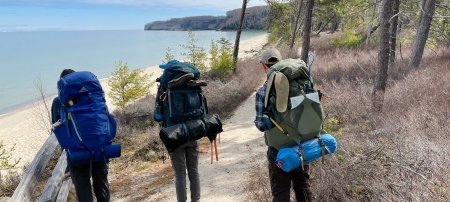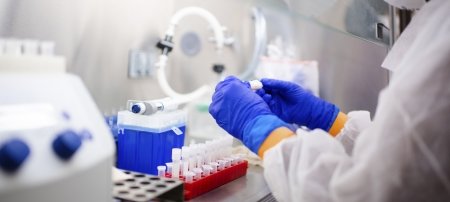New Remote-Sensing Development Could Aid Disaster Relief

When earthquakes hit, emergency responders need to know quickly where to send their resources. A Michigan Technological University researcher and his graduate students believe they can help.
Thomas Oommen, assistant professor in the Department of Geological and Mining Engineering and Sciences, is using remote sensing in a new way, to assess the damage quickly and more accurately. His tool: crowdsourcing, or what he calls the “power of the volunteer crowd.”
“The use of crowdsourcing to analyze earthquake-induced damages in remotely sensed imagery is a relatively new damage assessment approach,” Oommen says. “It was developed in the wake of the 2008 Sichuan earthquake and formalized during the 2010 Haiti and 2011 New Zealand earthquakes.”
Oommen says that the advent of Web 2.0 technologies and the ubiquity of free remote-sensing images that possess three components of high resolution—spatial (measure of the smallest object that can be identified), spectral (the specific wavelengths that a sensor can record) and temporal (how often a sensor can obtain imagery)—have made crowdsourced damage assessment possible. The benefit has already been demonstrated—delivery of damage estimates two to three times faster than previously.
“In 10 days, approximately 600 volunteers from 21 countries evaluated close to 100,000 buildings within a 300-square kilometer area in Haiti,” Oommen says. “However, detailed ground assessment also highlighted the limitation of this approach and the variability in accuracy of damage assessment with varying expertise of the crowd volunteers.”
To overcome this limitation, he proposes automating key tasks using state-of-the-art machine learning and image processing and shifting the role of the volunteer crowd from manual image interpretation to supervised guidance of the automated tasks for mapping and classifying damage.
Recent examples in Haiti, New Zealand, and China have Oommen and his graduate students exploring this new crowd-based rapid damage assessment solution.
“Our system is called BACKBOnE: Building a Crowdsourced Knowledge Base of Extreme Events,” Oommen says. “Using researchers from around the globe, we want to improve the assessment of the damage.” BACKBOnE requires object-based characterizations (spatial and contextual information in addition to pixel values) of damage that adequately distinguish damage types and can be adapted for different disasters.
Oommen and a doctoral student yet to be chosen will be funded by a $325,000 grant from the National Science Foundation (NSF). They will be collaborating with Umaa Rebbapragada, a machine-learning scientist at NASA Jet Propulsion Laboratory’s Machine Learning Group.
Daniel Cerminaro, a civil engineering graduate student of Oommen and a recent NSF graduate research fellowship awardee, worked two years as an undergraduate researcher with Oommen to develop the preliminary results for the NSF proposal. Their ongoing goal remains getting the important data to responders earlier, so that they can help those in need more quickly. “This can ultimately help save lives,” Oommen says.
Michigan Technological University is an R1 public research university founded in 1885 in Houghton, and is home to nearly 7,500 students from more than 60 countries around the world. Consistently ranked among the best universities in the country for return on investment, Michigan's flagship technological university offers more than 120 undergraduate and graduate degree programs in science and technology, engineering, computing, forestry, business, health professions, humanities, mathematics, social sciences, and the arts. The rural campus is situated just miles from Lake Superior in Michigan's Upper Peninsula, offering year-round opportunities for outdoor adventure.




Comments